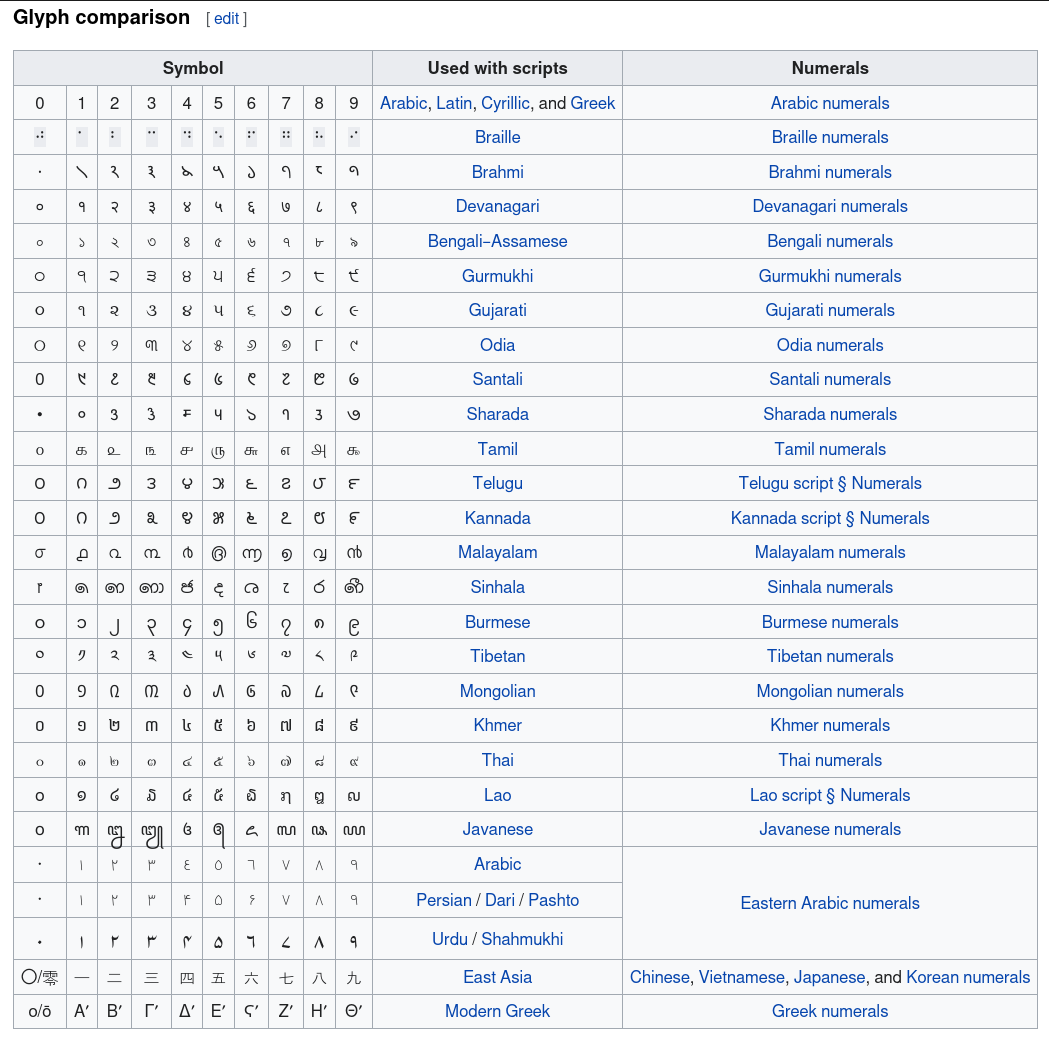I constantly perform basic math operations – counting, addition, multiplication – in my day-to-day life without ever stopping to think about how I represent the numbers in these operations. In fact, I'd taken it for granted that everyone around the world used the same base 10 system of Arabic numerals delimited by commas that I do. But that's not the case at all. Throughout history, and even today, numbers are represented in so many different ways.
Different bases
The Mayans are famous for using a vigesimal (base 20) number system instead of the decimal (base 10) system commonly used around the world today. Other civilizations throughout history did the same. For example, in the old British monetary system, 20 shillings made up 1 pound, North England used a Celtic vigesimal number system to count sheep, and millers from the Basque country in modern Spain relied on a base 20 number system to track their output.
But those number systems are long gone. Today's pound is made up of 100 pence, and sheep are counted in sets of 10. That must mean that today's world only uses decimal number systems, right? Wrong!
The modern world relies heavily on various number systems, and we have absolutely no intention to standardize. Binary (base 2) systems dominate the computer world, and tetravigesimal (base 24) systems are used to track time. Septenary (base 7) systems are used to manage the days of the week and to notate musical letters, while duodecimal (base 12) systems are used to count inches in a foot and in the Chinese zodiac. (Fun fact: 12 pennies make a shilling.)
Turns out, different bases are used everywhere today. You may not have even realized you were switching between a decimal system and a tetravigesimal system when you checked for the time earlier today. It's just second nature!
Different glyphs
The Hindu-Arabic numeral system (usually shortened to "Arabic numeral system") is the most common system for representing numbers in the world. That said, many societies create their own versions of the same ten glyphs.

Most are grouped into one of three families: Western, Middle Eastern, and Indian. But this is just considering today's number systems. Walking backwards through history, all the way back to Egyptian hieroglyphics, there are countless symbols that have been used to represent numbers in the past. And some are still used for decorative purposes. Maybe you've recently seen an analog clock with Roman numerals on it?
Different delimiters
In the United Kingdom and United States, every third digit in a large number is separated by a comma, starting from the ones digit and going left. In Europe, it's a decimal. That means 1 million might be written as 1,000,000 or 1.000.000 depending on which side of the Atlantic Ocean you are. Then again, if you're in France or Sweden, the delimiter is often the space instead, e.g. 1 000 000.
For decimal numbers, the symbols are also reversed. In the United States, one-and-a-half is written as 1.5, while in Europe, it's written as 1,5. As far as I'm aware, there are no exceptions here.
Moving on to Asia, the delimiter rules change once again. In India, the first three digits are separated by a comma, but after that, there's a comma after every two digits.
| USA | India | Term |
|---|---|---|
| 1,000 | 1,000 | Thousand |
| 100,000 | 1,00,000 | Lakh |
| 10,000,000 | 1,00,00,000 | Crore |
As a result, terms like million and billion, which rely on commas in positions that are powers of one thousand apart, are not used. Instead, other terms like lakh (one hundred thousand) and crore (ten million) are preferred. These terms rely on commas that are separated by powers of one hundred (after the first thousand).
Conclusion
In my lifetime, I've been exposed to various numeral systems without even realizing it. I mindlessly switch through many as I go about my day, but whenever I come across a new one, I'm always just a little bit surprised anyway.
Mostly, I think it's important to know about the different systems to avoid potential confusion or blunders. Check your bank account balance again. Does that comma mean what you think it does?